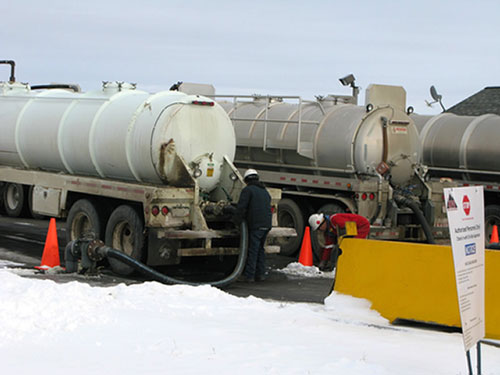Earthquakes in the eastern United States and Canada are many times more severe than central U.S. earthquakes of human or natural origin, earthquake scientists have found, highlighting a crucial need to separate the two regions when designing future earthquake hazard maps. The study separated the regions from the Mississippi-Alabama border up to the base of Lake Michigan, approximately 87°W.
“People have never really compared these two regions very carefully,” said Yihe Huang, assistant professor of Earth and environmental sciences at the University of Michigan, Ann Arbor, and lead author of a study published in Science Advances on 2 August.
Because earthquakes have occurred rarely in the central and eastern United States until recently, seismologists have not studied those areas as closely as they have more high-risk ones like the U.S. West Coast. “They are always taken as one region in the hazard models, but…if you look closely, they actually [are] very different,” she said. “We didn’t really think about this before.”
Huang’s research shows that there is a fundamental and important difference in the stress released, and therefore in the hazard level, of central U.S. quakes compared with those in the eastern United States and Canada, said Gail Atkinson, professor of Earth sciences and Industrial Research Chair in Hazards from Induced Seismicity at Western University in London, Ontario, Canada.
Different Triggers, Same Shaking
Huang and her coauthors began their investigation questioning whether seismologists can use existing earthquake hazard models—developed using data from naturally occurring tectonic earthquakes—to accurately predict the severity of quakes induced by human activity.
They expected the trigger mechanism to be a major source of uncertainty in hazard prediction models, but they found instead that the biggest difference was geography. Earthquakes they analyzed from the eastern United States and Canada along the Appalachians released 5–6 times more energy than their central counterparts. Consequently, Huang argued that “we should treat the central and eastern U.S. tectonic earthquakes differently in our hazard prediction.”
Their study confirmed that earthquakes in the central United States released similar amounts of energy and shook the ground the same way whether they were induced or natural. So seismologists can use the same models to study them all, report Huang and her colleagues.
“Within the central U.S., all of the earthquakes appear to be the same, and we’re really comparing apples and apples,” said William Ellsworth, professor of geophysics at Stanford University in Stanford, Calif., and a coauthor on the paper.
“We don’t need to discriminate why the earthquake occurred to describe its shaking,” he said.
Different Types of Stress Relief
Why do the two regions produce earthquakes of such different severity? The reason, the researchers explained, is that the central and eastern regions release underground stress using different mechanisms. The way that ground layers shift and slide against each other to dissipate energy determines the violence of the stress release and strength of high-frequency motion aboveground, the shaking most relevant for engineering safety and seismic hazard assessment.
Huang explained that in the central United States, all nine earthquakes they examined happened when chunks of Earth’s crust slid horizontally against each other along strike-slip faults. Six of the eight eastern earthquakes they analyzed occurred at reverse faults, where the ground shifts vertically against the pull of gravity. Separating by region, Huang said, equates to separating by fault type.
A comparison of earthquake magnitudes in eastern and central regions underscores the greater power of eastern temblors, according to Huang. The team’s list of natural events, reaching back more than 15 years, contains only one earthquake stronger than magnitude 5 in the central United States but three from the eastern United States. The strongest, an M5.8 quake in Mineral, Va., on 23 August 2011, caused significant property damage but only minor injuries.

Ellsworth explained that industrial processes in the central and eastern United States, like the disposal of wastewater from oil production and hydraulic fracturing, may simply be speeding up the normal geologic processes nearby by releasing underground pressure that builds up naturally. “We might be speeding up the processes by hundreds of thousands of years,” he said.
The researchers noted in their paper that wastewater injection is likely acting as a trigger for stress release but that subsequent shaking follows natural tectonic physics. Because the shaking is similar, Huang said, existing ground motion prediction equations can actually be used to predict the severity of induced earthquakes as long as they first account for the fault type at work.
Improving Hazard Predictions Nationwide
Now that this new work has revealed a significant difference in the types of earthquake-producing faults prevalent in the central and eastern regions, Huang said that she wants to conduct a broader investigation into seismic events nationwide to see if there are other overlooked patterns related to earthquake strength.
In the meantime, the new recognition of an eastern versus central difference in typical fault type should help improve future hazard prediction maps and guide the construction of earthquake-safe structures, Ellsworth said.
“The more accurate we can make that forecast,” he said, “the more it actually reduces the cost of ensuring seismic safety.”
—Kimberly M. S. Cartier (@AstroKimCartier), News Writing and Production Intern
Correction, 23 August 2017: This article has been updated to correct the number of earthquakes of each fault type analyzed in the study.
